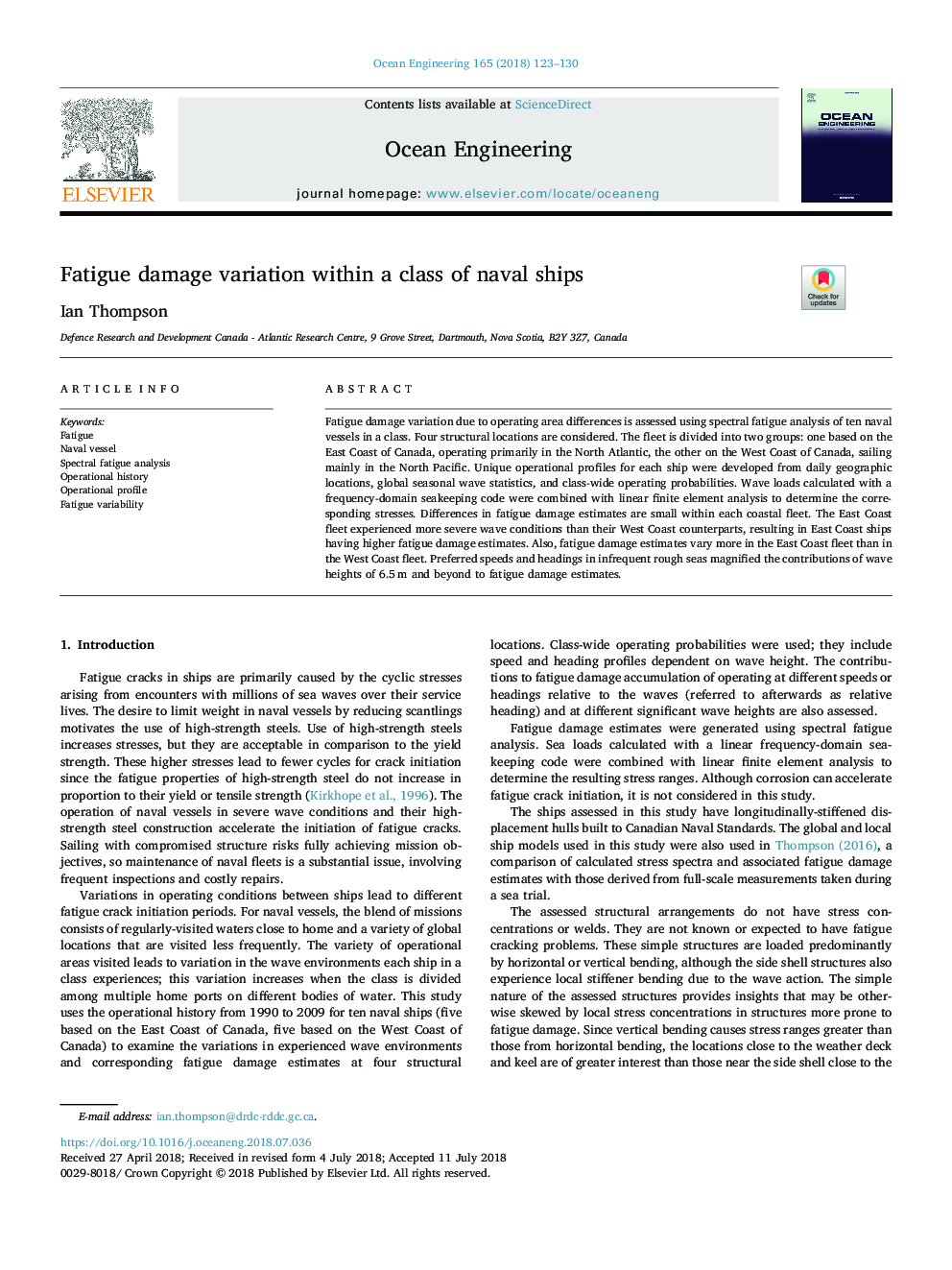| Article ID | Journal | Published Year | Pages | File Type |
|---|---|---|---|---|
| 8061761 | Ocean Engineering | 2018 | 8 Pages |
Abstract
Fatigue damage variation due to operating area differences is assessed using spectral fatigue analysis of ten naval vessels in a class. Four structural locations are considered. The fleet is divided into two groups: one based on the East Coast of Canada, operating primarily in the North Atlantic, the other on the West Coast of Canada, sailing mainly in the North Pacific. Unique operational profiles for each ship were developed from daily geographic locations, global seasonal wave statistics, and class-wide operating probabilities. Wave loads calculated with a frequency-domain seakeeping code were combined with linear finite element analysis to determine the corresponding stresses. Differences in fatigue damage estimates are small within each coastal fleet. The East Coast fleet experienced more severe wave conditions than their West Coast counterparts, resulting in East Coast ships having higher fatigue damage estimates. Also, fatigue damage estimates vary more in the East Coast fleet than in the West Coast fleet. Preferred speeds and headings in infrequent rough seas magnified the contributions of wave heights of 6.5â¯m and beyond to fatigue damage estimates.
Related Topics
Physical Sciences and Engineering
Engineering
Ocean Engineering
Authors
Ian Thompson,
